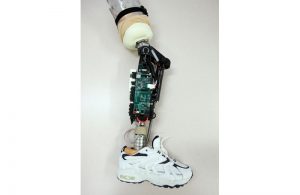Bionic future
Natural disasters such as recent earthquakes in Japan, Chile, Haiti and China, but also tragedies caused by mankind, such as wars and landmines, having a strong impact even after many years, road accidents, household accidents, accidents on worksite and serious diseases as cancer and diabetes each year cause a high number of cases of lower limb amputation.
There is an increasing need for political intervention aimed to guarantee full respect for human dignity and rights of freedom and autonomy of the disabled person and promotes full integration in the family, in school, at work and in society. In our country, it would be opportune changing the Nomenclature of prostheses and aid, the document that lists the devices and technological devices provided by the National Healthcare Service to people with disabilities; it dates back to 1992, and in 20 years technology has achieved important results. Therefore, it is unfair that the Nomenclature of prostheses and aid in our country, forgotten by all, despite today’s technological progress able of offering a clear benefit is in contrast to the pharmaceutical formulary which is regularly updated following the evolution of research.
Also, we should improve technology related to prosthesis that can restore hope and opportunity to lead a normal life for the victims of serious injuries. Research is advancing greatly, trying to make devices increasingly available and efficient, enabling performances at least in part similar to those of the lost limb.
This is, for example, the case of a pilot project funded by the U.S. army that improves the condition of those who have lost their legs through technology that contains the nerves of the remaining muscles, and enables them a robotic movement.
Last 20 April, the magazine The Journal of the American Medical Association, funded by the U.S.A. Army, published a project that aims at improving the old prostheses in the lower limbs with bionic parts.
” We have recently studied the neutral control of artificial arms using the technique of muscle re-innervation” : this is what Levi Hargrove writes as a researcher at the Rehabilitation Institute of Chicago. “However, lower limb amputees are more numerous than upper limb amputees. So we’ve extended our research for leg amputees.”
The muscle re-innervation technique is based on using the nerves remained intact after amputation to control the movements of the prosthesis trying to understand the stimuli from the brain. Therefore, electrical signals from muscles are sent through electromyography to a software that can recognize them and thus maneuver the bionic leg.
The experimentation in progress involves four transfemoral amputees and four non-amputees, leading to both positive and unexpected results: all volunteers are able to control the knee and the ankle of an avatar used on a computer for the simulations starting from the neural information of the thigh. Amputees have achieved 91% accuracy of movements and non-amputees, 89%.
Quoting the words of Hardgrove: “There is a lot of work to be done, but the future of a more advanced prosthesis control is bright.”
Salvatore Cimmino
